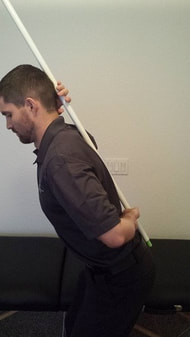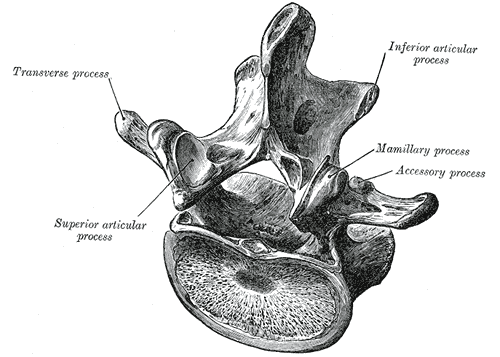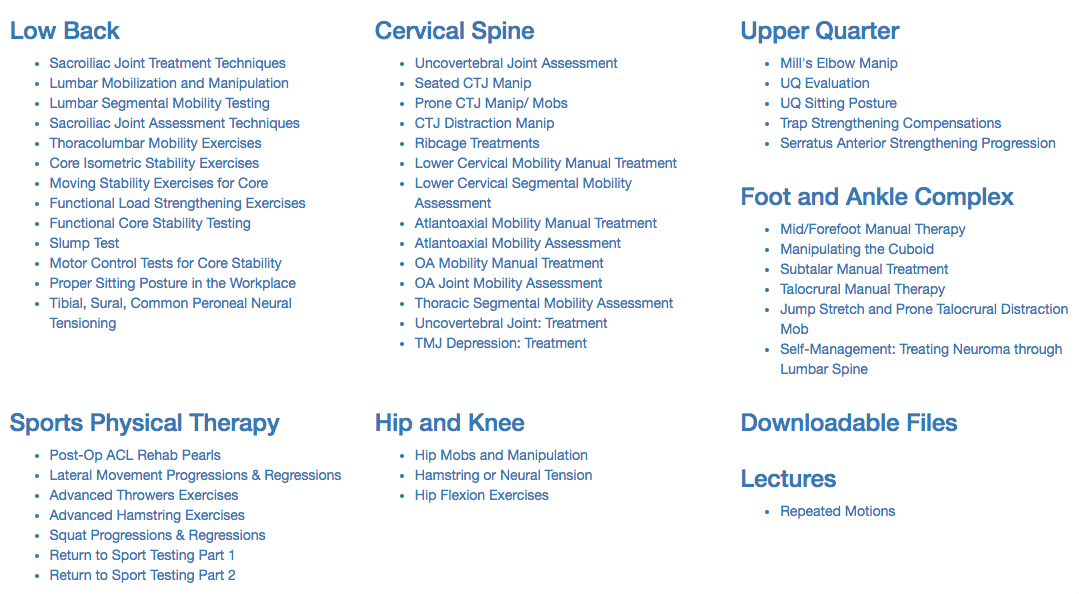- Home
- About Us
- TSPT Academy
- Online Courses
-
Resources
- Newsletter
- Business Minded Sports Physio Podcast
- Day in the Life of a Sports PT
- Residency Corner
-
Special Tests
>
-
Cervical Spine
>
- Alar Ligament Test
- Bakody's Sign
- Cervical Distraction Test
- Cervical Rotation Lateral Flexion Test
- Craniocervical Flexion Test (CCFT)
- Deep Neck Flexor Endurance Test
- Posterior-Anterior Segmental Mobility
- Segmental Mobility
- Sharp-Purser Test
- Spurling's Maneuver
- Transverse Ligament Test
- ULNT - Median
- ULNT - Radial
- ULNT - Ulnar
- Vertebral Artery Test
- Thoracic Spine >
-
Lumbar Spine/Sacroiliac Joint
>
- Active Sit-Up Test
- Alternate Gillet Test
- Crossed Straight Leg Raise Test
- Extensor Endurance Test
- FABER Test
- Fortin's Sign
- Gaenslen Test
- Gillet Test
- Gower's Sign
- Lumbar Quadrant Test
- POSH Test
- Posteroanterior Mobility
- Prone Knee Bend Test
- Prone Instability Test
- Resisted Abduction Test
- Sacral Clearing Test
- Seated Forward Flexion Test
- SIJ Compression/Distraction Test
- Slump Test
- Sphinx Test
- Spine Rotators & Multifidus Test
- Squish Test
- Standing Forward Flexion Test
- Straight Leg Raise Test
- Supine to Long Sit Test
-
Shoulder
>
- Active Compression Test
- Anterior Apprehension
- Biceps Load Test II
- Drop Arm Sign
- External Rotation Lag Sign
- Hawkins-Kennedy Impingement Sign
- Horizontal Adduction Test
- Internal Rotation Lag Sign
- Jobe Test
- Ludington's Test
- Neer Test
- Painful Arc Sign
- Pronated Load Test
- Resisted Supination External Rotation Test
- Speed's Test
- Posterior Apprehension
- Sulcus Sign
- Thoracic Outlet Tests >
- Yergason's Test
- Elbow >
- Wrist/Hand >
- Hip >
- Knee >
- Foot/Ankle >
-
Cervical Spine
>
- I want Financial Freedom
- I want Professional Growth
- I want Clinical Mastery
 Core strengthening appears to be a very abstract term in the world of physical therapy. To some, it means very specific motor control training. To others, it means planks. Several years ago, a proposed core stabilization clinical prediction rule was shown to lack validity. Regardless, due to the lack of established guidelines for core stability training, there will continue to be a variety of techniques, based on the clinician's preference. When it comes to lumbar manipulation, there has been a significant amount of research to show our inability to manipulation a specific segment. Even when we try to "isolate" an area, movement can occur several segments above and below. It would appear the lack of specificity with manipulation is rather insignificant, so certain patients may just respond to manipulation in general. Can the same theory apply to stabilization? I recently read a study that compared specific motor control training in the lumbar spine to high-load deadlift training. The results showed that there was no difference in strength, pain intensity or muscle endurance between the two groups. The motor control group did have better motor control and activity, but the fact that pain, strength, and endurance were similar can help us in not needing to be so specific with our exercises. Sometimes, the particular instructions we give to our patients can actually cause a fear of movement, which is something we want to avoid. Now, I am not necessarily saying there is no point to motor control training. I would simply argue that it's not as important as we used to think. If there is a subtle pelvic motion when reaching overhead, we don't necessarily need to be stopping the exercise altogether. It may still be beneficial to establish some general patterns of motion during earlier stages of rehab in order to prevent re-aggravation during high load training. Personally, following my manual treatment (if indicated), I will start with a couple mobility exercises to help get the spine moving. I then follow that up with some motor control training to prep for whatever movement I am going to have the patient perform. For example, if my patient will be doing a deadlift, I will prime them with a quad rock back and/or hip hinge, in order to help dissociate lumbar and hip motion with heavy lifting. My end-goal however, is to get my patient strengthening with heavier weight. -Dr. Chris Fox, PT, DPT, OCS TSPT is now offering a comprehensive LUMBAR SPINE COURSEInterested in learning more about the lumbar spine?
Looking for advanced sports and orthopedic content? Take a look at our BRAND NEW Insider Access pages! New video and lecture content added monthly.
1 Comment
7/31/2023 02:08:40 pm
To address the concerning issue of space debris, effective regulation and monitoring are necessary. Responsible governance is crucial due to the increasing number of satellites and rocket fragments orbiting Earth, aiming to prevent collisions and protect space operations. Regulatory frameworks and monitoring systems, utilizing ground-based radars and space-based sensors, are vital in tracking and cataloging space debris. International collaboration is essential to develop comprehensive regulations and share monitoring data for sustainable space activities and safeguarding orbital regions.
Reply
Leave a Reply. |
Dr. Brian Schwabe's NEW Book in partner with PaleoHacks!
Learn residency-level content on our
Insider Access pages We value quality PT education & CEU's. Click the MedBridge logo below for TSPT savings!Archives
July 2019
Categories
All
|








 RSS Feed
RSS Feed